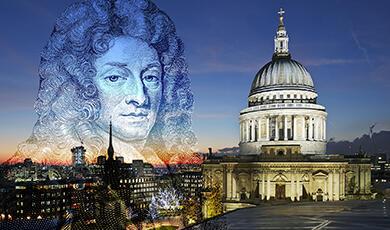Press release: Alan Turing: Pioneer of Mathematical Biology

Turing’s Chemical Basis of Morphogenesis helps explain 2-D patterns in nature like the spots on a leopard
Later work modelling the spines on a Radiolara in 3-D
His pioneering work is finding further applications today
Embargo (quotes) Tuesday 6 June 2023, 2pm
We would like to invite you to a lecture on Alan Turing: Pioneer of Mathematical Biology, by Professor Sarah Hart on Tuesday 6 June 2023 1pm-2pm (UK time).
Turing is well-known for his work on the Enigma code in World War II, and his theoretical work underpinning computer science, Hart will explain, but less so for his pioneering work on how complex living organisms develop from tiny collections of cells. And on how the shapes, forms and patterns in animals and plants emerge, including how the leopard gets its spots.
Professor Hart will say: “If we think about how animals grow, the starting point is a single cell – the egg. It’s essentially a sphere – not a perfect mathematical sphere, of course, there would always be tiny imperfections, but these imperfections are small and random – different eggs are imperfect differently. So how does this homogeneous, symmetrical structure develop asymmetry as it grows? How can an apparently uniform surface like an animal’s skin in embryo suddenly, apparently spontaneously, develop pigmentation like spots or stripes? What Turing suggests is one way that this may happen. He shows that phenomena like this could be caused by a system of (as yet unknown) chemical substances, which he calls morphogens to convey, as he says, the idea of “form-producer”, that diffuse through the tissue but also react with each other. If they are in equilibrium (the same amounts being created and destroyed), then nothing changes, but if that equilibrium is unstable, then even very small random imperfections, as would, indeed must, naturally occur, can destroy the equilibrium and give rise to the development of inhomogeneous patterns.”
She will go on to explore the maths behind this: “In his paper, Turing goes into much greater detail and lengthy mathematical analysis covering more biologically likely scenarios, like rings of cells or tissue, and the two-dimensional case of the surface of an animal’s skin. He gives a picture of “dappling” which can be produced by this type of process. Here, at any specific location, the diffusion part of the process means concentrations are affected only by concentrations nearby, so as the foetus grows, diffusion plays less of a role as the distances involved are too far for morphogens to travel. Thus, there would be a point during the growth of the foetus when any patterns of pigmentation (for instance) settle down and become fixed.”
Turing’s paper dealt with the morphogenesis equations in two dimensions but he later went on to look at three dimensions using the spines in a radiolara, single-celled marine organisms; and he worked with a research student, Bernard Richards, who computer-modelled them – correctly predicting the form of a species of radiolara, as it turned out. Hart will say that no further developments were to take place in this field until the late 20th century, but that more advanced computer modelling today shows how morphogenesis works far more easily – and the reaction-diffusion model Turing suggested has now found many more applications beyond morphogenesis.
ENDS
Notes to Editors
You can sign up to watch the hybrid lecture online or in person; or email us for an embargoed transcript or speak to the lecturer: l.graves@gresham.ac.uk / 07799 738 439
Read more about Professor Hart
Sign up to our monthly newsletter to get advance notice of our events.


 Login
Login



